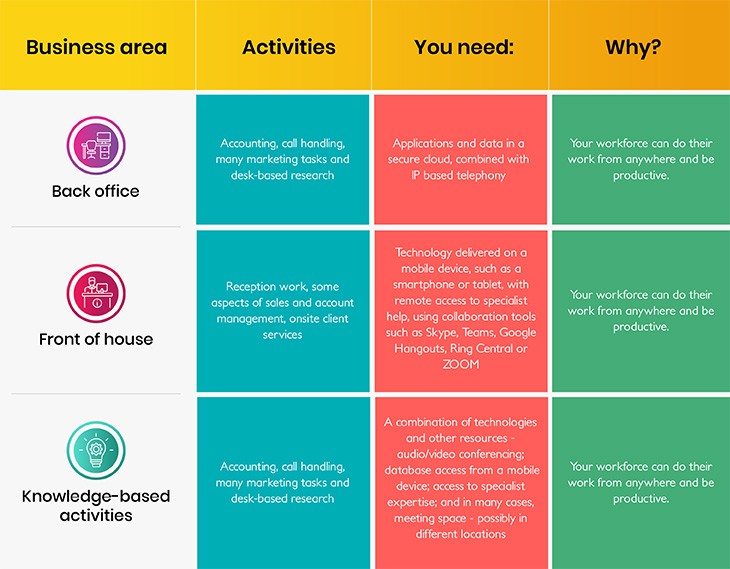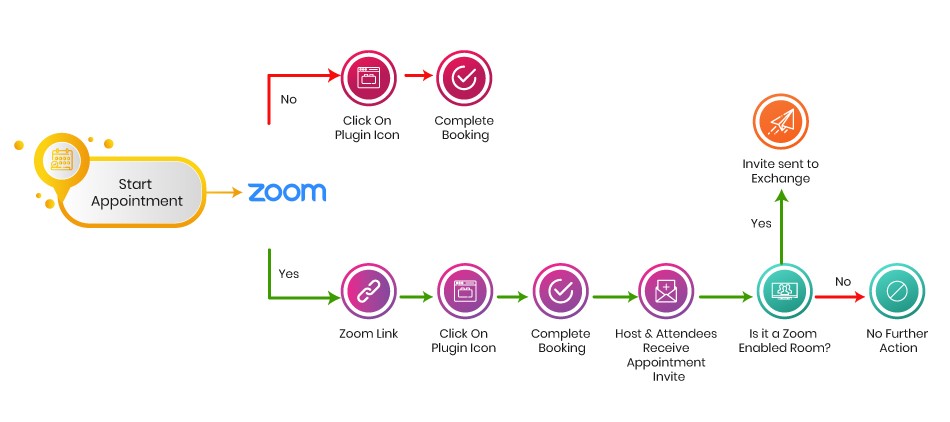With homeworking now essential, we’ve never seen a bigger need for effective remote collaboration – and you’re probably thinking hard about what tools you need to manage it in your organization.
There are plenty of choices – the technology that gets people talking has developed hugely in the last decade.
In pursuit of the perfect remote collaboration environment, there are 3 big challenges you need to tackle:
1. Choosing the correct tools for the job
2. Making sure your workers engage with them easily
3. Making sure your approach is secure, cost effective, reliable and sustainable.
So what ARE the correct tools for the job?
That depends on what you need them to do. Start looking at where your business activities lie:

OK – you already have a clearer idea of what you might need.
But what about points 2 and 3 – engaging your workers and ensuring your approach is secure, as well as cost effective, reliable and sustainable?
In some ways, these important issues have the same solution – a combination of:
- good co-ordination of people and their technology
- clear communication of aims and processes
- careful monitoring of all outcomes
- robust reporting to inform better decisions.
This is why.
Workers who are trained – and who find their technology intuitive to use – are more likely to engage with it and use it.
Video conferencing is one great example. Studies have shown that people can be reluctant to set up a video conference if it’s a time-consuming or complicated process – but if it takes just a few minutes, that obstacle is removed.
On a wider level, monitoring usage plus measuring outcomes and productivity creates a clear view of whether your approach is cost-effective, and helps with planning.
This is when integrated workspace technology enters the picture.
Effective collaboration involves bringing together not just your people, but also key elements from a number of technologies.

Discover why work is now what we do – not where we go.
The challenge happens when a collaborative project involves several colleagues in different locations and time zones, video or audio conferencing.
As many organizations are finding to their cost during the coronavirus crisis, good agile working is not just a matter of giving your staff a laptop and downloading Skype – that’s just a recipe for chaos.
Homeworking and remote collaboration need to be carefully organized and supported to create efficient, productive, sustainable and healthy ways of working.
Learn more about an integrated workplace.
Bringing all the elements together
Effective remote collaboration means drawing people and technology together in harmony, even across multiple locations and time zones.
Trying to do this with non-integrated technology is tricky, as anyone will tell you who has ever had to call five PAs around the world to set up a suitable video conference time.
Even Outlook is limited when it comes to adding elements such as food and coffees for a multi-location meeting, or for making sure essential equipment is available.
Using meeting room scheduling software that integrates with your office systems, including the Outlook calendar, removes difficulty.
By displaying colleague, room and equipment availability in real-time, it enables your meeting organiser to locate and book the necessary space in a few minutes, and send out invitations.
Good meeting room scheduling software integrates with Exchange and Outlook 365, showing users a familiar interface, and with collaboration aids such as ZOOM, Microsoft Teams and Skype.
See how technology enables Amy’s agile working day

Key benefits of the integrated approach to collaboration
An integrated approach cuts out stress – whether it’s in the scheduling process or during the actual initiation of the call – getting the required people into the right space, with the correct facilities and services to hand, at the right time.
It sets the bar for an effective meeting experience, and delivers:
- Clarity for participants about the meeting and resources needed
- Automatic notifications for all if there are changes to times and locations
- Booking services as part of one single meeting transaction
- A secure, welcoming visitor experience, with self-check-in to a room to collaborate with a project team
- Better workforce performance with less wasted time, improving productivity and potentially reducing indirect operation costs
- Useful reports on how your space and resources are being utilized.
Case study: Integrated meeting room scheduling software and ZOOM
ZOOM has had massive uptake during the coronavirus crisis, being chosen by individuals, SMEs and corporate users for its ease of use, reliability and quality.
So we considered the positive implications and user experience gained by bridging our workplace technology and ZOOM.
As this illustration shows, an integrated approach for meeting and room scheduling means it’s a quick process to organize and operate an efficient video conference.

The integrated approach with room meeting room scheduling software allows day-to-day scheduling from a single interface, whether it’s planned or ad hoc, and the same simple process can be used to create and run collaborative meetings.
Looking to the future
During the coronavirus crisis, many organizations have thanked their lucky stars that they had meeting room scheduling software already in place, because it’s made the transition to homeworking and remote collaboration smoother.
Others, unsupported by the technology, have patched together remote operating, and made a slow journey to something like business as usual. Workers have grown used to FaceTime instead of face to face; maybe even started to enjoy being at home instead of being stuck in traffic.
Whichever category your business is in, you’ve probably noticed some interesting possibilities.
The potential for reducing real estate costs, maybe, or the potential to improve worker retention: happy people tend to stay put. Maybe you’ve even noticed unexpected improvements in productivity.
As we come out of the crisis – and we will, even if it takes a long time – take a few moments to absorb and assess this worldwide agile working and remote collaboration experiment, and consider how it might benefit you going forward.
Now is the right time to start planning the future shape of your operations, and choosing the right technology tools for the job – and during that process, don’t forget to keep integration at the top of your mind.




